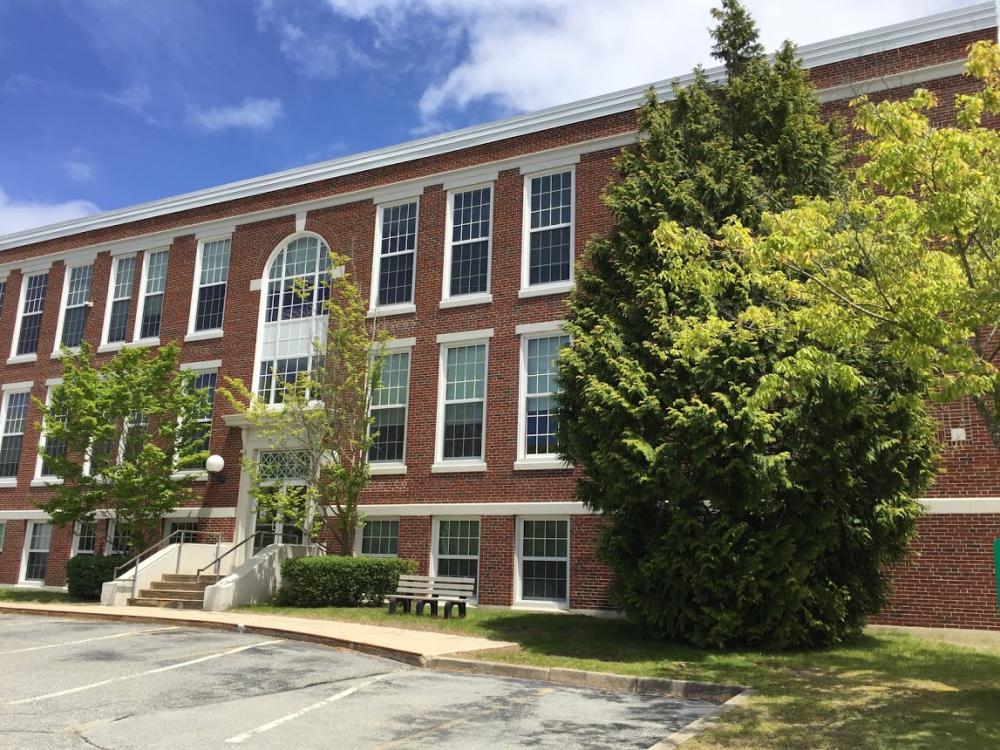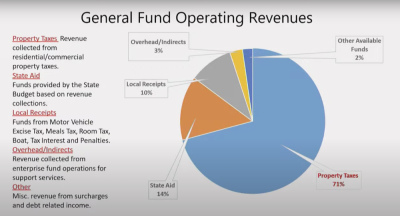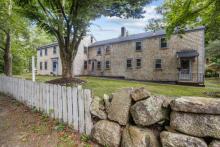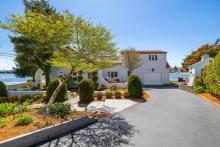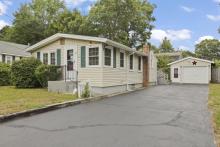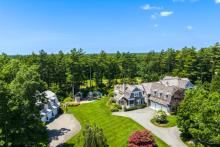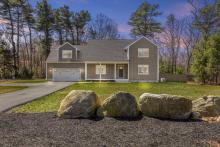Officials reexamine economic development as costs rise and infrastructure ages
As operating costs rise and revenue streams remain limited, the town is looking to get a better handle on balancing the need for new development with the constraints of the aging sewer infrastructure.
With 71% of the town’s general fund revenue tied to property taxes, and tight constraints on how much that tax levy can grow year to year, new construction is one of the few ways to bring in additional revenue without an override of Proposition 2½, Gary Carriero, interim town administrator and treasurer and director of budget and finance, explained at the Monday, April 28 Select Board meeting.
“The town continues to get minimal state aid,” Carriero said. And while the town has capacity to borrow for projects that come their way, the general operating budget continues to increase due to inflation and rising health insurance costs.
In fiscal year 2026, new growth is expected to add about $800,000, which is an increase of approximately $200,000 from the previous year. However, Carriero warned the trend for growth, which has remained relatively stagnant over the years, may begin to start going downward as developable land becomes scarce.
The Finance Committee also warned the Select Board of the town’s growing reliance on residential property tax as they see more growth in housing and less for commercial and industrial developments. But building more homes, especially multi-unit, higher-density housing, also comes with its own set of challenges as a major overhaul of the wastewater treatment facility looms large.
At the Monday, May 5 Select Board meeting, board member David Tatelbaum pointed out that the over $3 million in sewer upgrades that are currently ongoing are only to help the town get by in the interim and in just a few years “we legitimately have to rebuild or tear down the existing facility,” he said.
In addition, the supporting infrastructure was not built to handle the flow from these high-density projects. At a recent Public Works Board meeting, Director Tim Barber highlighted a total 744 proposed housing units from developers, who are at different stages in the process, that the department is currently working with to identify potential flow impact and if the system can handle it.
These issues have become a concern for board members and they are now seeking to identify the complete status of development in town, bridge communication gaps across departments and develop a comprehensive plan that can address the town’s needs, desires and limitations in the realm of economic development for both the short and long term.
Over the next several weeks, the Select Board will be meeting with various departments, having met so far with the Finance Committee and planning director, to discuss the town’s economic development.
The conversation with Planning Director Daniel Gioiosa, largely centered around the rise in high-density housing. He highlighted the steps his department takes in ensuring sewer capacity issues are addressed with prospective developers.
Gioiosa called for the town to get more “proactive” and “creative” with its zoning to address some of those issues in addition to concerns for other aspects of the town, such as the roads, schools and storm water drainage.
The Select Board has plans to meet with the Zoning Board of Appeals in June.
But before then, the Select Board looks to get together a comprehensive list of all the current developments and proposals and where they are in their processes. Additionally, the board expressed a desire to revive the Economic Development Task Force, who may be charged with compiling a list of the town’s empty storefronts and vacant lots.
Carreiro noted this goes back to what the town expressed wanting in the master plan — to be “proactive and go out there and market the town. The whole Route 6 corridor is sewered, watered, so I think we need to take a more positive approach on that.”
Select Board member Shawn McDonald emphasized the importance of the relationship between businesses and the town.
“The town can do all the marketing possible, but when it comes time to permitting, [we] can’t make it difficult because, to be honest with you, the town does have a reputation to be very difficult to work with,” he said.
While there are more serious regulations that need to be addressed through the permitting process, such as when it comes to wetlands, he said there are others where it wouldn’t hurt the town to compromise.
As an example, he pointed out how a proposal for an Audi Dealership was recently withdrawn due to what appeared to be a miscommunication about the town’s expectations for the exterior design of the business.
The town is also developing a building fee waiver policy, which is still being drafted, that may help projects the town hopes to attract. Only a few waivers have been granted in the last few years, such as the Mendes-Monteiro housing project on Anderson Way, and the goal is for the policy to provide clear parameters for what the town is looking for and what projects would qualify.
The town has also been working with Counsel Susan Murphy on the town’s proposed 40b housing projects, including Sherbooke Farms on Old Westport Road, which looks to build 156 rental units, and Hawthorne Residences on Tucker Toad, which looks to build 147 over 55 homeownerships.
At the Monday, May 5 Select Board meeting, Murphy emphasized the importance of the town’s comment letters for these projects, which gives them an opportunity to identify any issues or concerns with the project across all departments.
She said the more information and supporting documentation the town can provide on issues, such as the sewer capacity, early on, the easier it will be to get those addressed.



